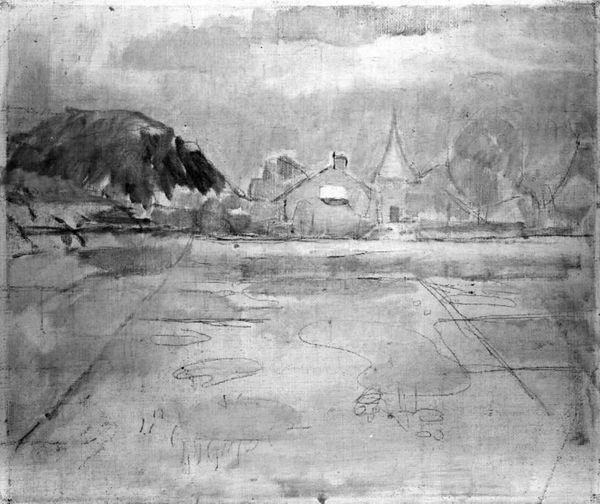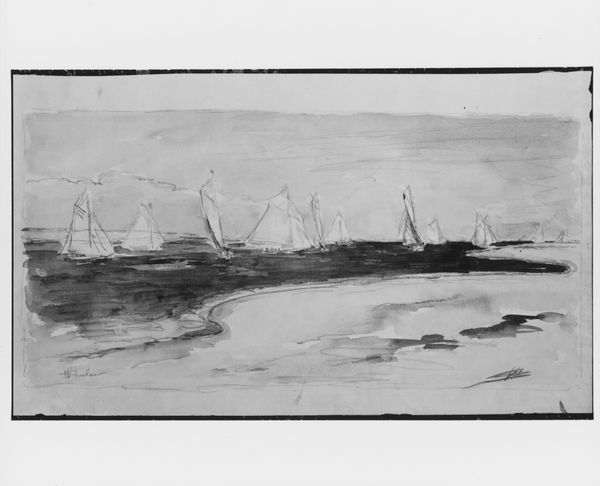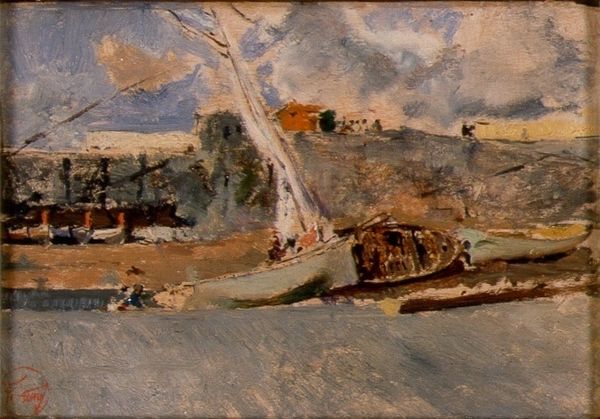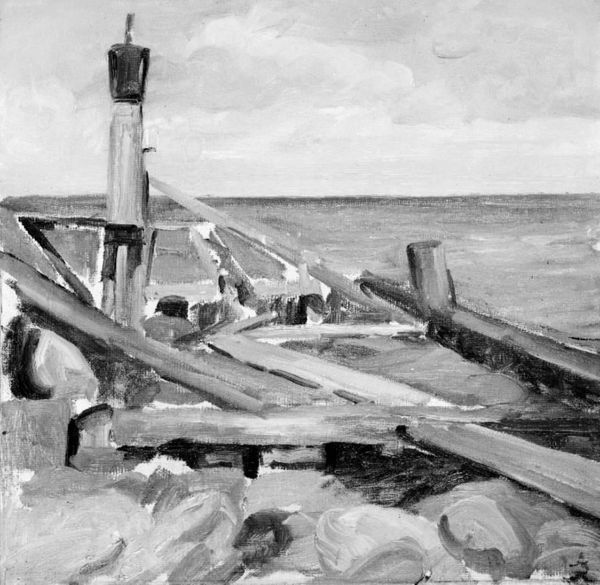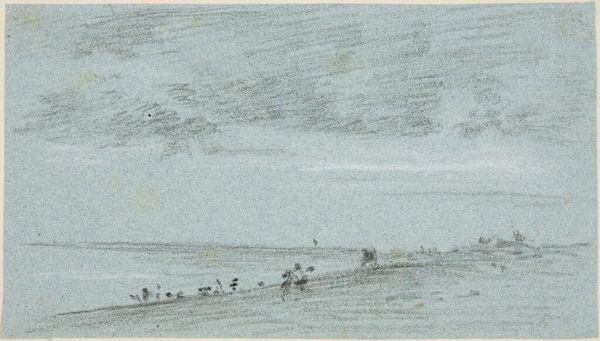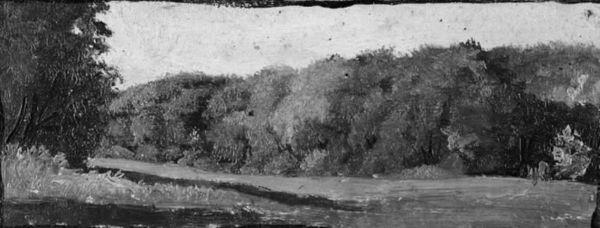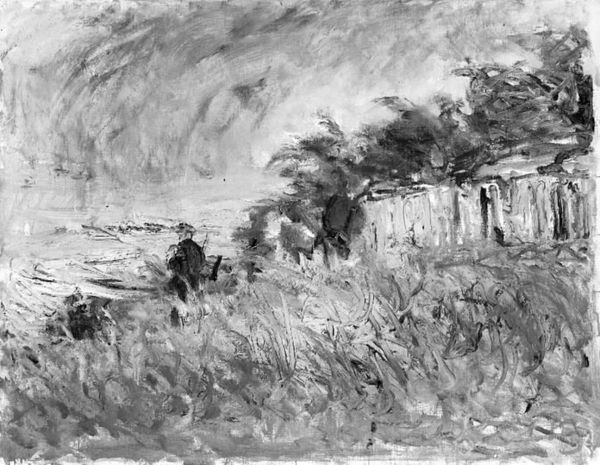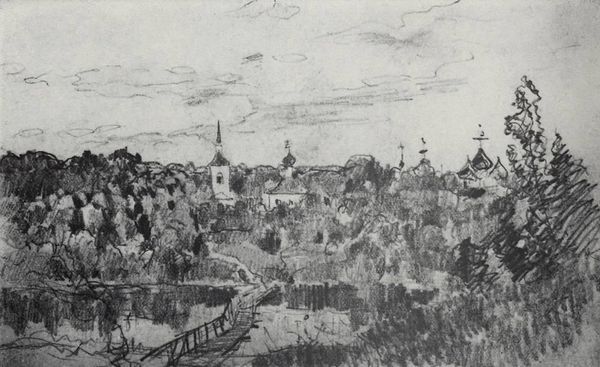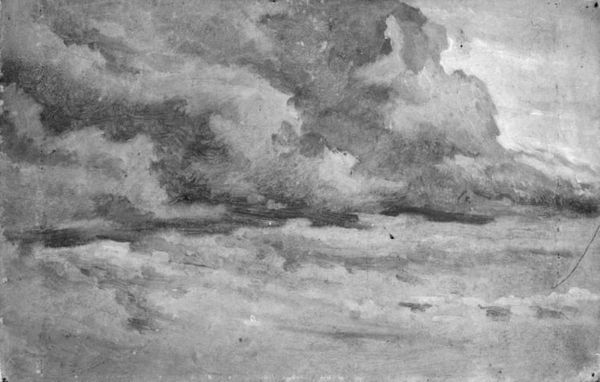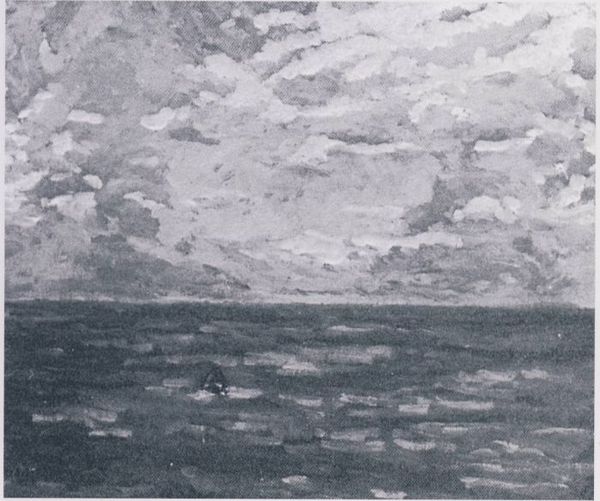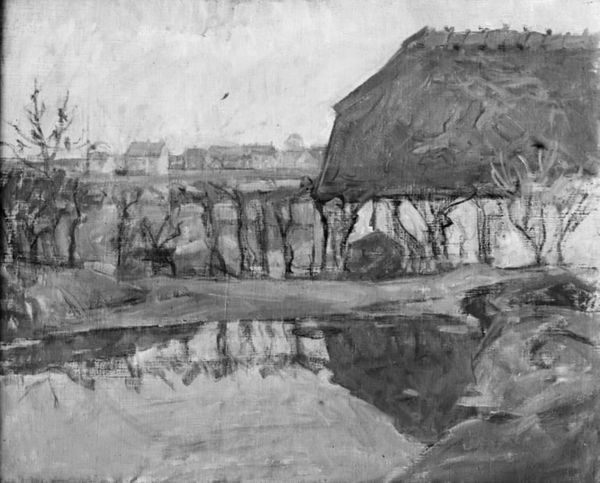
painting, oil-paint, impasto
#
painting
#
oil-paint
#
landscape
#
figuration
#
impasto
#
genre-painting
#
realism
Dimensions: 30.5 cm (height) x 44 cm (width) (Netto)
Curator: At first glance, this painting by Karl Schou exudes a rather subdued and melancholy air. The muted tones evoke a sense of quiet contemplation. Editor: We’re looking at “Badende. Refshaleøen,” an oil painting likely made between 1912 and 1916. It’s part of the collection at the SMK, the National Gallery of Denmark. Schou captures a genre scene, bathers enjoying a day, I suppose, at Refshaleøen, which is an island near Copenhagen. Curator: The brushwork, evident in its texture, is quite pronounced, isn't it? The impasto application adds a certain rawness to the overall composition. Note how the artist manipulates the paint to render the sea and the sky; horizontal strokes build an illusion of vast space. Editor: Yes, and if we delve deeper, we discover a society undergoing profound shifts. Public bathing was becoming more common but not universally accepted. This image suggests an interesting narrative about societal progress, particularly as attitudes toward bodies changed, perhaps a rise of socialist ideologies, offering glimpses of leisure previously confined to certain classes. Curator: Indeed. The forms themselves are so suggestive and amorphous—particularly the figures in the water. Their anonymity adds to the introspective nature of the piece, reflecting perhaps a broader existential questioning, which was prevalent during the turn of the century and World War I, as notions of reality shifted. Editor: This also speaks to artistic license. Though labeled “realism,” there's something distinctly dreamlike about the haziness. Schou isn't merely documenting. Curator: Agreed, it appears he distorts for expressionistic effect, creating an internal world mediated by feeling as much as observation. The work's merit is that it isn't just a chronicle, but an atmospheric portrait of cultural anxiety. Editor: It reminds me that a painting is a social artifact. Museums, such as the SMK, act as custodians in negotiating its historical reception. We inevitably interpret art through contemporary prisms. Curator: An apt observation. We started seeing a painting tinged in grey hues, but really the whole painting is soaked in much history of a specific period and place in the Western World. Editor: Very true; looking closer reveals the weight of how culture is preserved and contested across time.
Comments
No comments
Be the first to comment and join the conversation on the ultimate creative platform.
